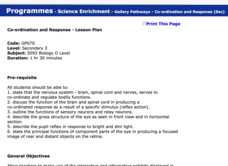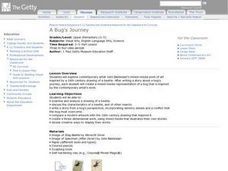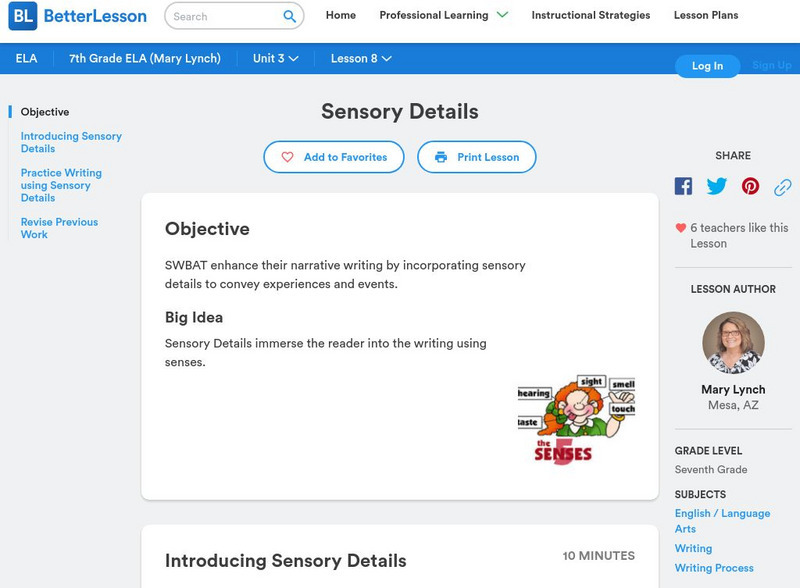Curated OER
Co-ordination and Response - Lesson Plan
Eleventh graders explain why colour blindness is more common in men than women.
Curated OER
Harriet The Spy
Fourth graders investigate the style of diary writing as its own genre of literature. They read Harriet The Spy in order to have a text for this literature study. Students use the skill of prediction to preview the story, and then...
Curated OER
Fantasy, Fables, Myths, Legends & Fairy Tales
Students identify the differences between fantasies, fables, myths, legends and fairy tales. In groups, they create their own versions of the different genres. They practice identifying the examples, as well.
Curated OER
Getting To Know You
Students prepare for and respond to literature selections. This package includes ten lessons from the American Literature series, each covering a different reading selection. Pre-reading and response activities are included for each...
Curated OER
A Bug's Journey
Students examine the artwork of John Baldessari that was inspired by a 16th century drawing of a beetle. They analyze a drawing of a beetle, discuss the insect's characteristics, and write a story from the perspective of a bug. Also,...
National Center for Case Study Teaching in Science
Bad Fish, Bad Bird
In an advanced biology lesson, learners see a PowerPoint about biologist Dr. Westwood, a two-time victim of poisoning. Designed to be used with clickers in the classroom, you could modify the lesson by creating a worksheet from the...
Curated OER
Punctuating Dialogue
Sixth graders use narrative strategies (e.g., dialogue and action) to develop characters, plot and setting and maintain a consistent point of view. They create and accurately punctuate dialogue necessary to help the plot progress,...
Curated OER
Night Hike
Students explore Upham Woods at night and investigate about the special adaptations of nocturnal animals. They identify three nocturnal animals and how they are adapted to the night. Students explain what night vision is and how it works.
Better Lesson
Better Lesson: Sensory Details
Students will learn how to enhance their narrative writing by incorporating sensory details to convey experiences and events. A power point presentation on sensory details is included.
TeachEngineering
Teach Engineering: Hearing: How Do Our Ears Work?
Students learn about the anatomy of the ear and how the ears work as a sound sensor. Ear anatomy parts and structures are explained in detail, as well as how sound is transmitted mechanically and then electrically through them to the...
Other
Cardiff University: The Physiology of Taste: Taste (Gustation)
This is a tutorial on the sense of taste. It provides a detailed description of the taste buds and the chemistry involved in taste.












